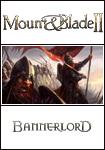
Mount & Blade II - Dev Blog 12
In M&B II's Dev Blog 12, TaleWorlds Entertainment covers the passage of time.
Thank you again, Couch, for tonight's news.
Bannerlord shares the setting of Calradia with Warband but takes place 200 years earlier. The map is also expanded to include regions further to the east and south of that in previous games, resulting in a map which is around three times larger. Land features and even some settlements from the previous games are recognisable. By sharing the same world, the two games become part of the lore of Mount & Blade in a wider sense. While the series' lore was kept to a minimum in Warband, being left to hints in dialogue, Bannerlord features its own storyline that will add some additional depth to the factions.
In addition to acting as the setting, providing the context for Mount & Blade's magnificent battles, the overworld map is also where a large chunk of gameplay lies. With Bannerlord, the approach is to provide more information to the player with the map itself and the HUD presented while travelling. Taking the icons as an example, it is now possible to see what a village produces by looking at its icon. These change dynamically over time to reflect different production facilities constructed in the village, or additions of buildings like castles. On the HUD, more information is presented to the player, including morale, food supplies, gold and more. We are currently restructuring the HUD to provide even more information without making it too overwhelming.
Characters and locations on the map make up what we call “parties”. All parties on the map, whether they are lords, bandits, hideouts or anything, have a function in the game's sandbox simulation of a feudal world. Here is a basic explanation of how the economy works:
-Villages produce goods based on what types of production they have in place (e.g. Sheep farms produce sheep, cheese, wool etc.)
-Peasants take goods produced in their village to sell in the local town by repeatedly travelling directly between the village and the town on the map.
-The raw materials are taken to towns and either consumed or processed into secondary goods (e.g. wool into clothes, sheep into meat) via workshops.
-Goods in towns are bought by caravans to be sold elsewhere for a higher price, caravans will assess the situation and try to maximise profit from their journey over the map.
When all of these steps are completed successfully, the prosperity of the settlements increases. What's interesting, though, is that because everything is connected in this way, disruption can be a very effective approach when dealing with an enemy or rival. A simple example is that raiding enemy villages or preventing peasants from making their journey to the local town impoverishes towns due to their lack of goods to process for trade. More indirect benefits can be received by, for instance, aiding a bandit group near to the fief of a rival noble from the same faction, trying to limit their income and gaining a leg over them in the faction standings. Since everything is simulated in this way, no matter what you do, it has a knock-on effect in the world. Manipulating this to your own ends is key to making progress in the game but AI Lords will also attempt to create problems for opponents, in an effort to better themselves.
The topography of the map is not entirely consistent with Warband, in fact Bannerlord's map is somewhat more mountainous. The effect of this is an increase in the number of choke points. It will be hard to avoid conflict, for instance, when traversing narrow passes through mountain ranges that may be riddled with ambush spots or enemy patrols. Tactically, the map offers many more options for controlling areas that serve as trade routes. Battles are often fought in the game to contest key choke points with the goal of securing passage for trade caravans and other parties. As a player, it is important to consider what kind of warfare you are likely to end up in, before sacrificing relations with a faction. If your speciality is skirmishing on foot over rough terrain, you might for example avoid engaging the Aserai, who will have higher mobility in the open desert.
The map is changed, not just by the activity of the player and NPCs but also by the passage of time. Changing seasons affect the weather and transform the landscape sending snow creeping south during winter. Significant gameplay effects, of the changing conditions, are felt in the effectiveness of different troop types. Cavalry and ranged units in particular will have a harder time in rain or snow. One major change from Warband is how time progresses; the yearly cycle has been shortened to twelve weeks, which adds more importance to the changing seasons and ageing of characters.
Source: Taleworlds
Information about
Mount & Blade IISP/MP: Single + MP
Setting: Fantasy
Genre: Strategy-RPG
Platform: PC
Release: Released


